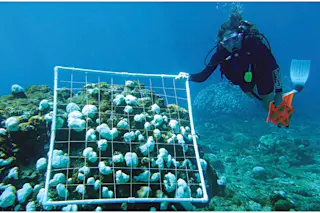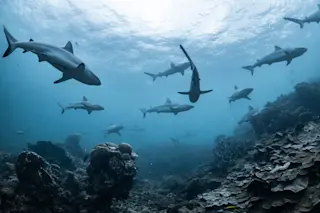Late last summer the United Nations Environment Program published an unusual book: the first accurate atlas of the world's coral reefs. It showed that many reefs are in very bad shape, even the ones that aren't being dynamited as a fishing method. "Coral reefs are under assault," the program's executive director, Klaus Toepfer, said. "They are rapidly being degraded by human activities. They are overfished, bombed, and poisoned." The atlas was released on September 11. It did not get front-page coverage.
Not that it would have; it does not take terrorist mass murder or envelopes full of anthrax to make us forget the ocean. We have always paid it little heed—always treated it, a little paradoxically, as both an infinite food store and an infinite garbage can. But this past year we began to face up to its real limits. The coral atlas, for all its beautiful color, was not ...














